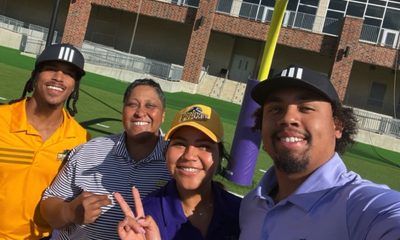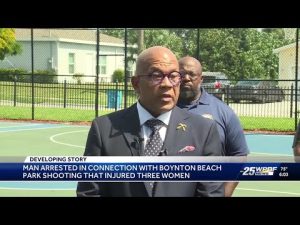Sports
Charlie Sifford, First Black on PGA Tour, Dies at 92

In this Jan. 13, 1969, file photo, Charlie Sifford throws up his arms after he dropped a short par putt on the 18th green to tie Harold Henning at the end of 72 holes in the Los Angeles Open golf tournament. Sifford, who fought the Caucasian-only clause on the PGA Tour and became its first black member has died Monday night Feb. 2, 2015. He was 92. The PGA of America confirmed the death of Sifford, who recently suffered a stroke. No cause of death was given. (AP Photo/File)
DOUG FERGUSON, AP Golf Writer
Charlie Sifford, who only wanted a chance to play and broke the color barrier in golf as the first PGA Tour member, died Tuesday night, the PGA of America said.
Sifford, who recently had suffered a stroke, was 92. Details of his death and funeral arrangements were not immediately available.
PGA of America President Derek Sprague called Sifford “an uncommon and faithful servant.”
“His love of golf, despite many barriers in his path, strengthened him as he became a beacon for diversity in our game,” Sprague said. “By his courage, Dr. Sifford inspired others to follow their dreams. Golf was fortunate to have had this exceptional American in our midst.”
A proud man who endured racial taunts and threats, Sifford set modest goals and achieved more than he imagined.
Sifford challenged the Caucasian-only clause and the PGA rescinded it in 1961. He won the Greater Hartford Open in 1967 and the Los Angeles Open in 1969. He also won the 1975 Senior PGA Championship, five years before the Champions Tour was created.
His career was fully recognized in 2004 when he became the first black inducted into the World Golf Hall of Fame. Last November, President Barack Obama presented him with the Presidential Medal of Freedom. Jack Nicklaus and Arnold Palmer are the only other golfers who received that honor.
“Charlie won tournaments, but more important, he broke a barrier,” Nicklaus once said. “I think what Charlie Sifford has brought to his game has been monumental.”
The one goal that eluded him was a chance to play in the Masters, which did not invite its first black player until Lee Elder in 1975. Sifford remained bitter, though the pain was eased when Tiger Woods won the first of his four green jackets in 1997.
Woods often has said he would not have played golf if not for Sifford and other black pioneers.
“It’s not an exaggeration to say that without Charlie, and the other pioneers who fought to play, I may not be playing golf,” Woods said in an email to The Associated Press late last year. “My pop likely wouldn’t have picked up the sport, and maybe I wouldn’t have either.”
The road was never easy.
Sifford was born on June 22, 1922 in Charlotte, North Carolina. He worked as a caddie and dominated the all-black United Golfers Association, winning five straight national titles. He longed to play against the best players, only to run into the same barriers that Teddy Rhodes and Bill Spiller faced — the Caucasian-only clause.
In his autobiography, “Just Let Me Play,” Sifford told of meeting Jackie Robinson in California about the time Robinson was trying to break the color barrier in baseball.
“He asked me if I was a quitter,” Sifford wrote. “I told him no. He said, ‘If you’re not a quitter, you’re probably going to experience some things that will make you want to quit.'”
During the 1952 Phoenix Open, one of the few events that blacks could play, Sifford found human feces in the cup when he got to the first green. He received death threats over the phone at the 1961 Greater Greensboro Open and heard racial slurs as he walked the fairways. He finished fourth, and didn’t quit.
He was beloved my some of golf’s biggest stars, including Nicklaus and Arnold Palmer.
During his induction ceremony, Sifford told of his first meeting with Palmer. They were playing in the 1955 Canadian Open and Sifford opened with a 63 to lead Palmer by one shot. He recalled Palmer standing in front of the scoreboard saying, “Charlie Sifford? How the hell did he shoot 63?”
“I’m standing right behind him,” Sifford said. “I said, ‘The same damn way you shot 64.’ That’s how we met.”
Sifford also received an honorary doctorate degree from the University of St. Andrews in Scotland for his career as a pioneer.
He often attended the Bridgestone Invitational at Firestone, not far from his home in Ohio. During an interview with the AP in 2000, Sifford said he was proud of the role in played in making the PGA Tour accessible to blacks.
“If I hadn’t acted like a professional when they sent me out, if I did something crazy, there would never be any blacks playing,” he said. “I toughed it out. I’m proud of it. All those people were against me, and I’m looking down on them now.”
Copyright 2015 The Associated Press. All rights reserved. This material may not be published, broadcast, rewritten or redistributed.
Alameda County
Seth Curry Makes Impressive Debut with the Golden State Warriors
Seth looked comfortable in his new uniform, seamlessly fitting into the Warriors’ offensive and defensive system. He finished the night with an impressive 14 points, becoming one of the team’s top scorers for the game. Seth’s points came in a variety of ways – floaters, spot-up three-pointers, mid-range jumpers, and a handful of aggressive drives that kept the Oklahoma City Thunder defense on its heels.

By Y’Anad Burrell
Tuesday night was anything but ordinary for fans in San Francisco as Seth Curry made his highly anticipated debut as a new member of the Golden State Warriors. Seth didn’t disappoint, delivering a performance that not only showcased his scoring ability but also demonstrated his added value to the team.
At 35, the 12-year NBA veteran on Monday signed a contract to play with the Warriors for the rest of the season.
Seth looked comfortable in his new uniform, seamlessly fitting into the Warriors’ offensive and defensive system. He finished the night with an impressive 14 points, becoming one of the team’s top scorers for the game. Seth’s points came in a variety of ways – floaters, spot-up three-pointers, mid-range jumpers, and a handful of aggressive drives that kept the Oklahoma City Thunder defense on its heels.
One of the most memorable moments of the evening came before Seth even scored his first points. As he checked into the game, the Chase Center erupted into applause, with fans rising to their feet to give the newest Warrior a standing ovation.
The crowd’s reaction was a testament not only to Seth’s reputation as a sharpshooter but also to the excitement he brings to the Warriors. It was clear that fans quickly embraced Seth as one of their own, eager to see what he could bring to the team’s championship aspirations.
Warriors’ superstar Steph Curry – Seth’s brother – did not play due to an injury. One could only imagine what it would be like if the Curry brothers were on the court together. Magic in the making.
Seth’s debut proved to be a turning point for the Warriors. Not only did he contribute on the scoreboard, but he also brought a sense of confidence and composure to the floor.
While their loss last night, OKC 124 – GSW 112, Seth’s impact was a game-changer and there’s more yet to come. Beyond statistics, it was clear that Seth’s presence elevated the team’s performance, giving the Warriors a new force as they look to make a deep playoff run.
Barbara Lee
WNBA’s Golden State Valkyries Kick Off Season with Community Programs in Oakland
“The Golden State Valkyries are more than a team—they’re a movement,” said Oakland Interim-Mayor Kevin Jenkins. “Their touchdown in Oakland marks a new era of opportunity, inspiration, and equity in sports. This partnership reflects our city’s deep commitment to uplifting women, investing in youth, and building a community where every dream has a place to grow. We’re proud to welcome the Valkyries to The Town.”
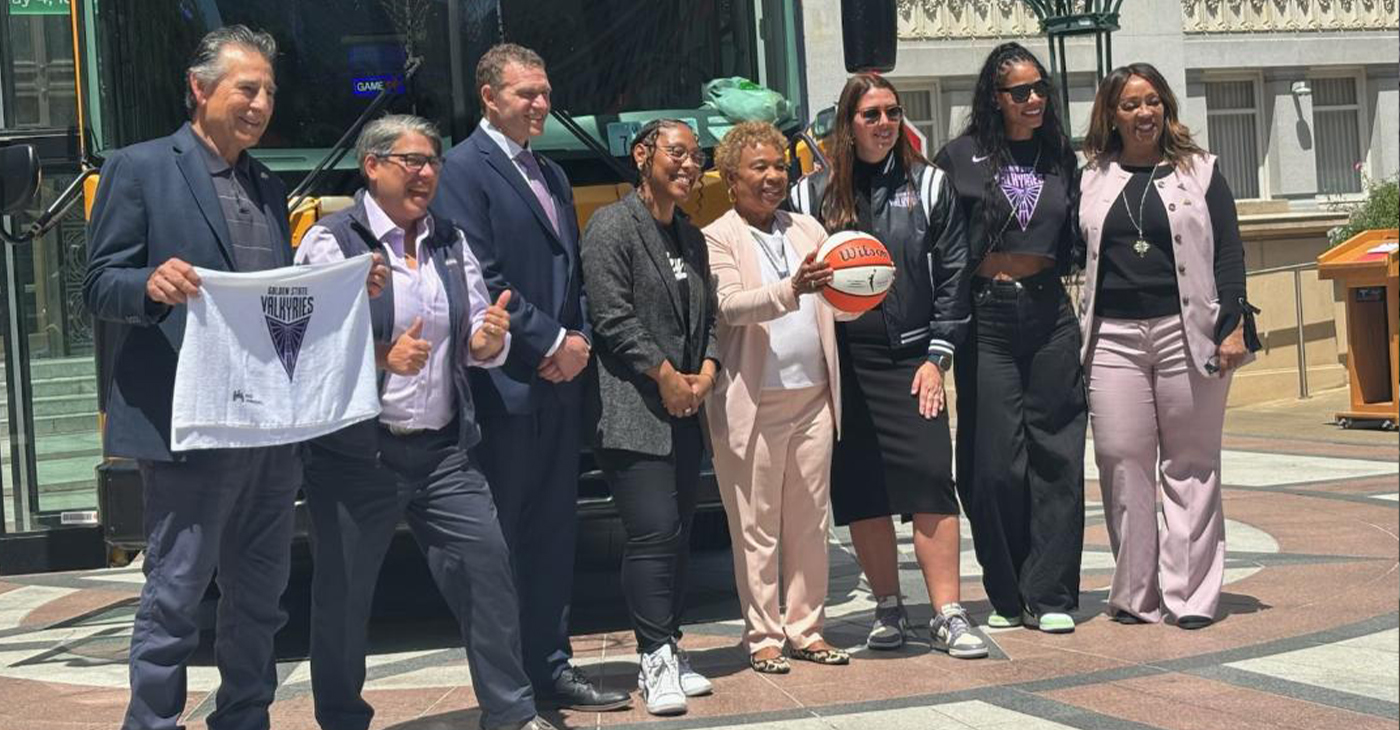
Team installs new nets at playgrounds, holds flag-raisings at City Halls in Oakland and S.F.
Special to The Post
The Golden State Valkyries brought the excitement of their inaugural season to every corner of the Bay Area with a full slate of community celebrations leading up to their historic home-opener against the Los Angeles Sparks at the Chase Center in San Francisco on Friday.
The week featured flag-raising ceremonies at city halls in Oakland and San Francisco, three “Violet Net” installation days at Oakland parks to encourage basketball play, fun “Hoopbus” takeovers at multiple schools presented by Kaiser Permanente, and player appearances.
“The Golden State Valkyries are more than a team—they’re a movement,” said Oakland Interim-Mayor Kevin Jenkins. “Their touchdown in Oakland marks a new era of opportunity, inspiration, and equity in sports. This partnership reflects our city’s deep commitment to uplifting women, investing in youth, and building a community where every dream has a place to grow. We’re proud to welcome the Valkyries to The Town.”
In total, 90 violet nets were installed on 45 basketball courts across 34 public parks throughout Oakland this week. A list of the parks receiving violet nets can be found at Valkyries.com.
About the Golden State Valkyries
The Golden State Valkyries, the WNBA affiliate of the seven-time NBA Champion Golden State Warriors, were announced as the 13th WNBA franchise on Oct. 5, 2023. According to Norse mythology, Valkyries are a host of warrior women who are fearless and unwavering – flying through air and sea alike.
This brand is Golden State’s modern interpretation of Valkyries: strong, bold, and fierce. Tipping off during the 2025 WNBA season, the team is headquartered in Oakland and will play home games at Chase Center in San Francisco. For Golden State Valkyries’ assets, including team logos, visit valkyries.com.
Activism
McClymonds High Names School Gym for Star Graduate, Basketball Legend Bill Russell
William “Bill” Felton Russell was born on Feb. 12, 1934, and died on July 31, 2022. He achieved fame as a U.S. professional basketball player who played center for the Boston Celtics of the National Basketball Association (NBA) from 1956 to 1969. He was the centerpiece of the Celtics dynasty that won 11 NBA championships during his 13-year career.
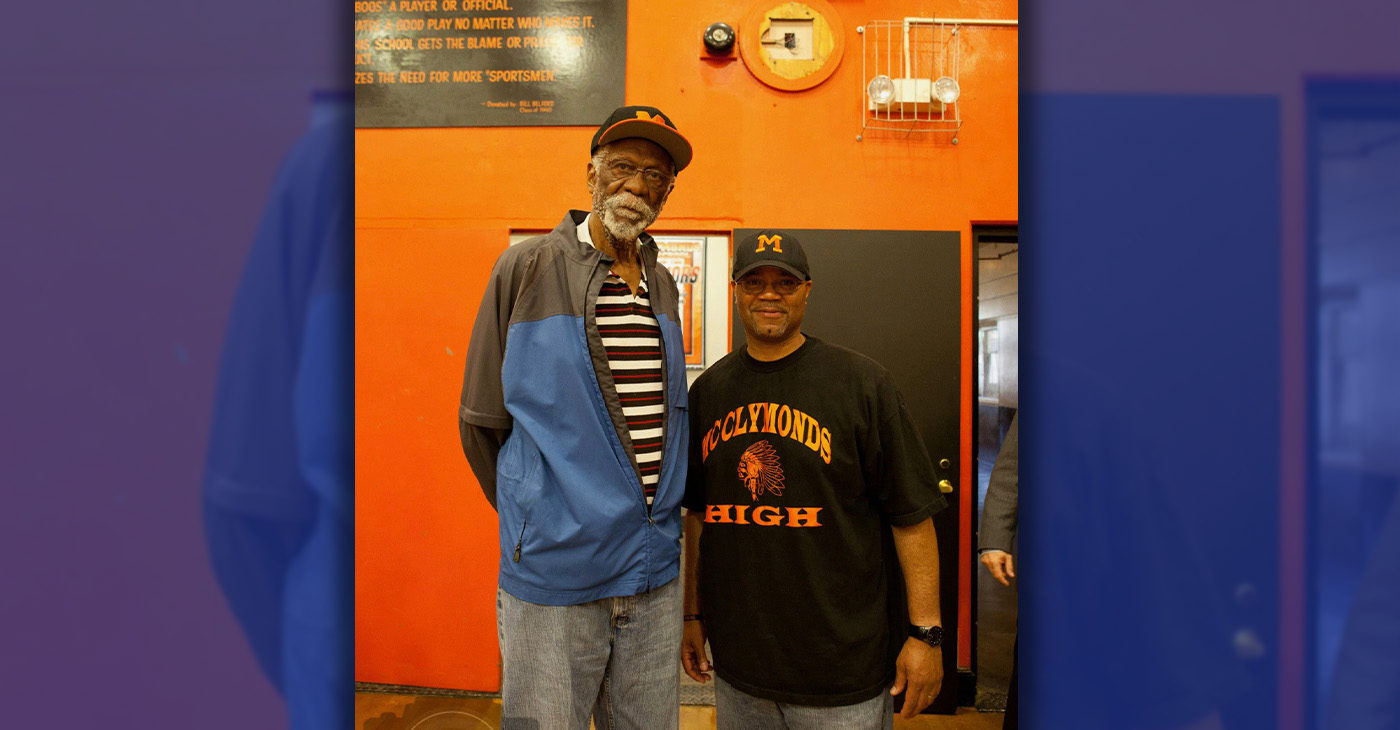
By Ken Epstein
West Oakland’s McClymonds High School, “the School of Champions,” this week named the school’s gymnasium in honor of one of its most famous graduates, basketball legend Bill Russell (class of ’52).
William “Bill” Felton Russell was born on Feb. 12, 1934, and died on July 31, 2022. He achieved fame as a U.S. professional basketball player who played center for the Boston Celtics of the National Basketball Association (NBA) from 1956 to 1969. He was the centerpiece of the Celtics dynasty that won 11 NBA championships during his 13-year career.
Russell is widely known as one of the greatest basketball players of all time. In 2011, he received the Presidential Medal of Freedom, the country’s highest civil honor, from President Barack Obama for Russell’s contributions to basketball and the Civil Rights Movement.
The McClymonds’ naming ceremony was held on Wednesday, the same day as Russell’s birthday. Oakland leader Bill Patterson, a longtime friend of Russell’s, was scheduled to cut the ribbon at the reopening of the gym, which had been closed for several months for renovation. Russell’s daughter Karen was scheduled to attend the ribbon cutting.
Russell’s name and signature are now printed on the gymnasium floor.
Patterson was working at DeFremery Park when he met Russell. “I befriended him as a boy and during his years at University of San Francisco” said Patterson. “We stayed friends for the rest of his life.”
Said McClymonds Principal Darielle Davis, herself a McClymonds graduate, “We are excited to honor Bill Russell for his sports accolades and because he broke color barriers. He is part of our legacy, and legacy is really important at McClymonds.”
Brian McGhee, community schools manager at McClymonds and former football player at UC Berkeley, said that Russell meant a lot to him and others at the school. “He was a beacon of light and hope for West Oakland,” he said. “He did a lot for sports and for civil rights.”
Starting in 2018, Ben “Coach” Tapscott worked with Patterson and other McClymonds grads, community members, and former coaches to encourage the Oakland Board of Education to endorse the naming of the school gym, which finally happened recently.
“We worked hard to make this happen,” said Tapscott. “He’s an important part of McClymond’s history, along with a lot of other famous graduates,” he said.
-
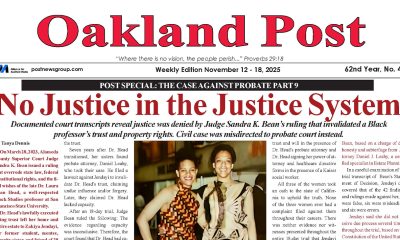
 Activism3 weeks ago
Activism3 weeks agoOakland Post: Week of November 12 – 18, 2025
-
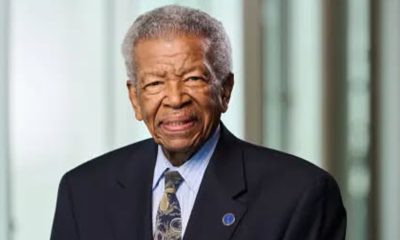
 Activism3 weeks ago
Activism3 weeks agoIN MEMORIAM: William ‘Bill’ Patterson, 94
-

 Activism3 weeks ago
Activism3 weeks agoHow Charles R. Drew University Navigated More Than $20 Million in Fed Cuts – Still Prioritizing Students and Community Health
-

 Bay Area3 weeks ago
Bay Area3 weeks agoNo Justice in the Justice System
-

 #NNPA BlackPress3 weeks ago
#NNPA BlackPress3 weeks agoLewis Hamilton set to start LAST in Saturday Night’s Las Vegas Grand Prix
-

 #NNPA BlackPress2 weeks ago
#NNPA BlackPress2 weeks agoBeyoncé and Jay-Z make rare public appearance with Lewis Hamilton at Las Vegas Grand Prix
-
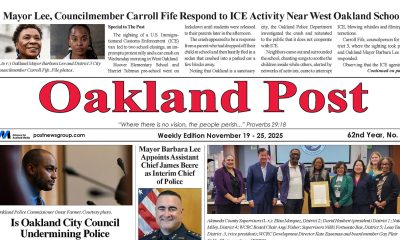
 Activism2 weeks ago
Activism2 weeks agoOakland Post: Week of November 19 – 25, 2025
-

 #NNPA BlackPress3 weeks ago
#NNPA BlackPress3 weeks agoThe Perfumed Hand of Hypocrisy: Trump Hosted Former Terror Suspect While America Condemns a Muslim Mayor











